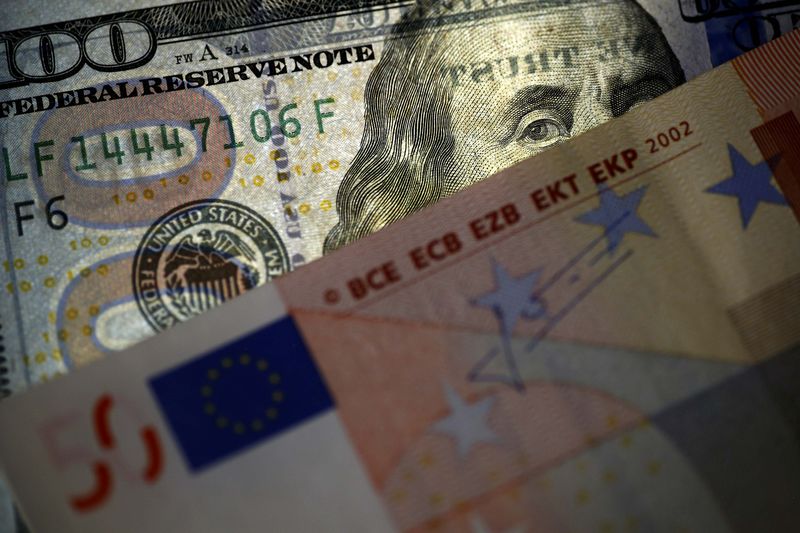
At 04:40 ET (08:40 GMT), the Dollar Index, which tracks the greenback against a basket of six other currencies, traded 0.2% higher at 105.695, having fallen 0.4% overnight, dropping to its lowest level since April 12.
The easing of tensions in the Middle East, with Iran indicating little desire to engage in all-out war with Israel following the latter’s strike last week, has resulted in the safe-haven dollar retreating from recent highs.
However, the greenback’s move lower on Tuesday was largely prompted by data showing a cooling of U.S. business growth, with activity dropping in April to a four-month low.
That said, comments from officials at the Federal Reserve have been mostly hawkish of late, suggesting that this individual data point is unlikely to result in rate cuts being brought forward to the summer.
“While activity indicators could prompt some FX moves, the kind of major repricing in Fed expectations that we saw in April can only be triggered by lower inflation, soft employment figures, or Fed communication,” said analysts at ING, in a note.
The first-quarter gross domestic product data on Thursday and the personal consumption price expenditures index, the Fed’s preferred measure of inflation, on Friday, could prompt bigger moves.
The Fed’s first rate cut is widely expected to be in September, with November the second favorite month, and June now deemed very unlikely.
In Europe, EUR/USD fell 0.1% to 1.0689, after gaining almost 0.5% on Tuesday following data that showed business activity in the eurozone expanded at its fastest pace in nearly a year, primarily due to a recovery in services.
Sentiment in Germany, the eurozone’s largest economy, also picked up in early April, with the country’s Ifo business climate index rising to 89.4, from a revised 87.9 the prior month.
The European Central Bank has essentially promised a rate cut at its next policy meeting on June 6, but Bundesbank President Joachim Nagel said on Wednesday that this will not necessarily be followed by further policy easing if eurozone inflation proves stubborn.
GBP/USD fell 0.1% to 1.2430, dropping after gains of around 0.8% in the prior session, benefiting from overnight data showing British businesses recorded their fastest growth in activity in nearly a year.
The Bank of England is expected to lower rates by at least half a percentage point this year, but strong data could see the central bank delaying its first cut until after the summer.
In Asia, USD/JPY rose 0.1% to 154.89, trading near 34-year highs and in sight of the 155 level.
The yen weakened even as a slew of Japanese officials warned of government intervention to support the beleaguered currency.
The Bank of Japan meets on Friday, and is expected to keep rates unchanged after a historic hike in March. But its outlook on inflation and economic growth will be closely watched.
USD/CNY edged higher to 7.2460, remaining close to five-month highs, while AUD/USD rose 0.3% to 0.6502, near a two-week high, after consumer CPIinflation read stronger than expected for the first quarter, pushing further above the Reserve Bank of Australia’s 2% to 3% annual target.
To read the full article, Click Here
